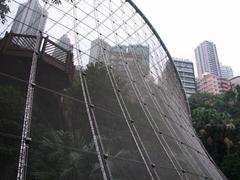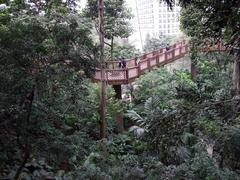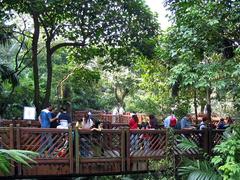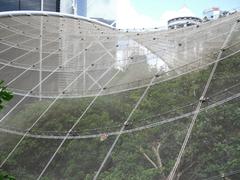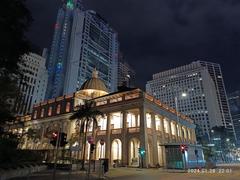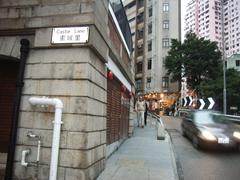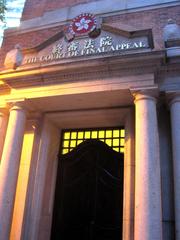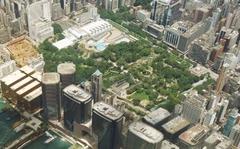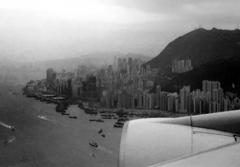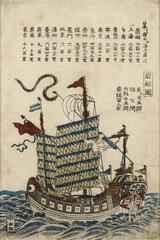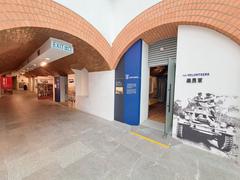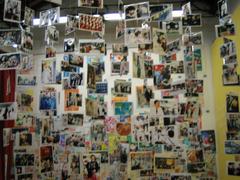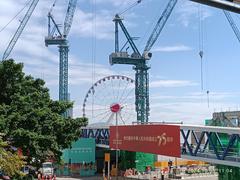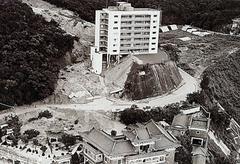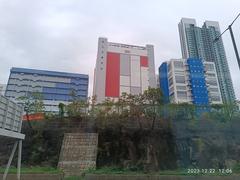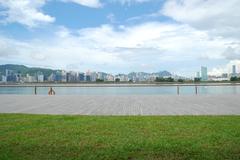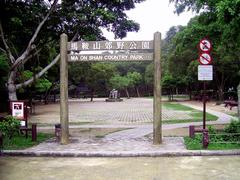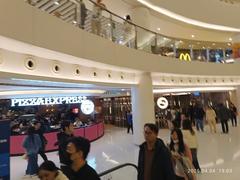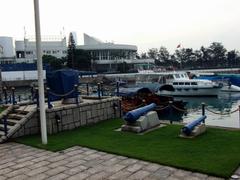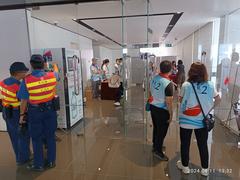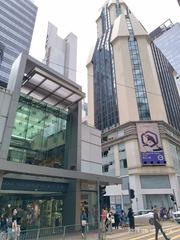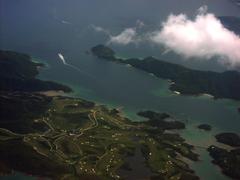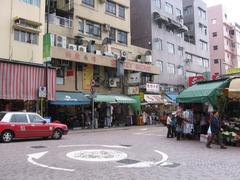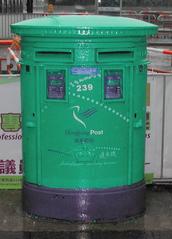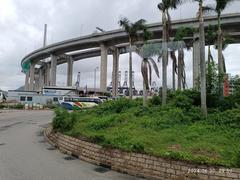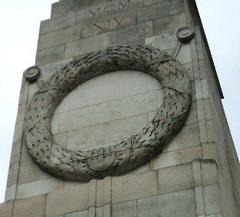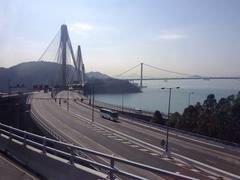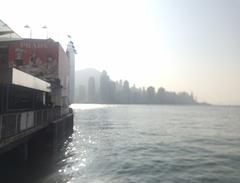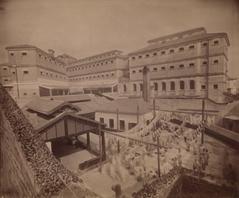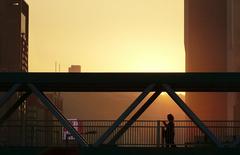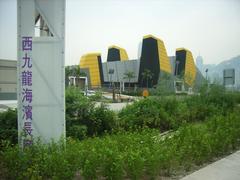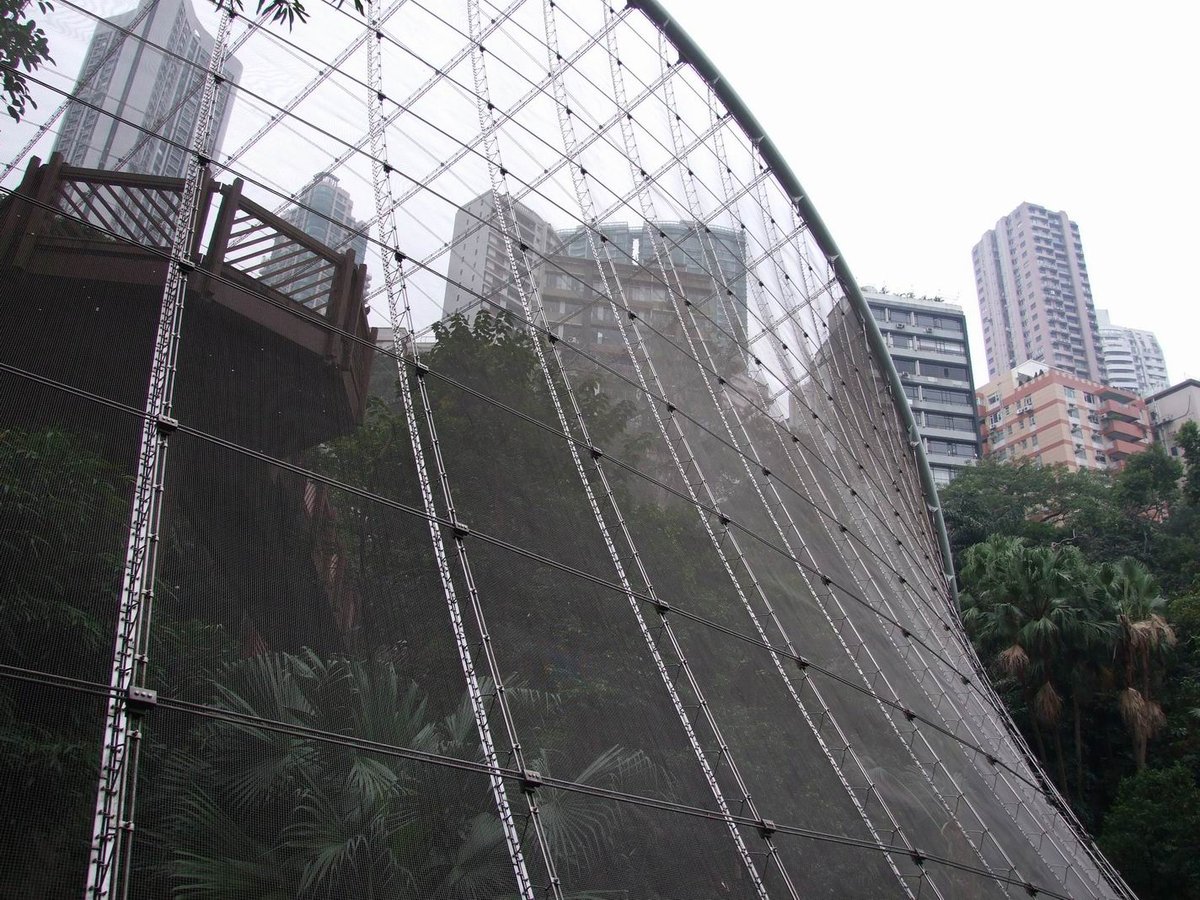
Visiting Hours and Tickets for Edward Youde Aviary, Hong Kong
Publication Date: 20/07/2024
Introduction to Edward Youde Aviary
Nestled within the bustling urban landscape of Hong Kong’s Central District, the Edward Youde Aviary stands as a tranquil sanctuary for bird enthusiasts and nature lovers alike. Located in the picturesque Hong Kong Park, this aviary is a testament to the city’s commitment to wildlife conservation and environmental education. Officially opened on September 6, 1992, and named in honor of Sir Edward Youde, a former Governor of Hong Kong and passionate advocate for wildlife preservation, the aviary has become one of the largest and most significant aviaries in Southeast Asia (Hong Kong Park website) (World Wildlife Fund).
Covering an expansive 3,000 square meters, the Edward Youde Aviary offers visitors an immersive experience in a carefully designed tropical rainforest environment. It is home to over 600 birds representing around 80 species from Southeast Asia, Indonesia, and New Guinea. The aviary’s architectural design, characterized by its steel cable support and netting, allows birds to fly freely while ensuring their safety. This unique structure not only provides a naturalistic habitat for the birds but also creates an unobtrusive and engaging experience for visitors (Hong Kong Park website).
The aviary is not just a haven for birdwatching; it plays a crucial role in global conservation efforts through its breeding programs for endangered species and extensive public education initiatives. Guided tours, interactive exhibits, and educational programs aim to foster a deeper understanding and appreciation of avian species and their ecosystems. This emphasis on education and conservation underscores the aviary’s mission to inspire future generations to support and engage in wildlife preservation (World Wildlife Fund).
Contents
- Introduction
- Origins and Establishment
- Architectural Design and Features
- Biodiversity and Conservation Efforts
- Educational and Cultural Significance
- Visitor Information
- Visiting Hours
- Admission Fees
- Getting There
- What to Bring
- Visitor Etiquette
- Accessibility
- Guided Tours and Educational Programs
- Nearby Attractions
- Impact on Local and Global Conservation
- Future Prospects and Developments
- Frequently Asked Questions (FAQ)
- Conclusion
Origins and Establishment
The Edward Youde Aviary, situated within Hong Kong Park, stands as a testament to the city’s commitment to conservation and education. Officially opened to the public on September 6, 1992, the aviary was named in honor of Sir Edward Youde, the late Governor of Hong Kong, who was a passionate advocate for wildlife conservation. The aviary was designed by the Architectural Services Department of the Hong Kong Government, in collaboration with the Urban Council, to provide a naturalistic habitat for birds and to promote public awareness of avian species and their ecosystems.
Architectural Design and Features
Spanning an impressive 3,000 square meters, the Edward Youde Aviary is one of the largest aviaries in Southeast Asia. It is designed as a walk-through aviary, allowing visitors to immerse themselves in a tropical rainforest environment. The structure is supported by a series of steel cables and netting, creating an unobtrusive barrier that allows birds to fly freely while keeping them safe from predators. The aviary’s design incorporates a variety of plant species, water features, and naturalistic landscaping to mimic the birds’ natural habitats.
Biodiversity and Conservation Efforts
The Edward Youde Aviary is home to over 600 birds representing around 80 species from Southeast Asia, Indonesia, and New Guinea. The aviary’s collection includes a mix of common and rare species, such as the Bali Mynah, Nicobar Pigeon, and the endangered Yellow-crested Cockatoo. The aviary plays a crucial role in the conservation of these species through breeding programs and public education initiatives.
The aviary’s staff work closely with international conservation organizations to participate in breeding programs for endangered species. These efforts have led to successful breeding of several species within the aviary, contributing to global conservation efforts. Additionally, the aviary serves as a research facility, providing valuable data on avian behavior, breeding, and habitat requirements.
Educational and Cultural Significance
The Edward Youde Aviary is not only a sanctuary for birds but also an educational resource for the public. The aviary offers guided tours, educational programs, and interactive exhibits to teach visitors about avian biology, ecology, and conservation. These programs are designed to foster a deeper understanding and appreciation of birds and their habitats, encouraging visitors to support conservation efforts.
The aviary also holds cultural significance as a symbol of Hong Kong’s dedication to preserving its natural heritage amidst rapid urbanization. It provides a tranquil escape from the bustling city, allowing residents and tourists alike to connect with nature and learn about the importance of biodiversity.
Visitor Information
Visiting Hours
The aviary is open daily from 9:00 AM to 5:00 PM. However, it’s always a good idea to check the Hong Kong Park website for the latest updates on visiting hours and special events.
Admission Fees
Admission to the aviary is free, making it an excellent budget-friendly activity for families, solo travelers, and bird enthusiasts alike.
Getting There
The aviary is located within Hong Kong Park, which is easily accessible by public transportation. The nearest MTR station is Admiralty Station, which is served by the Island Line and Tsuen Wan Line. From Admiralty Station, take Exit C1 and follow the signs to Hong Kong Park. The aviary is a short walk from the park entrance.
What to Bring
- Comfortable Footwear: The aviary features a network of elevated walkways and paths, so comfortable walking shoes are recommended.
- Water Bottle: Staying hydrated is important, especially during the warmer months. There are water fountains available, but bringing your own bottle is convenient.
- Camera: The aviary is home to over 600 birds from 80 different species, making it a paradise for photographers. A camera with a good zoom lens will help you capture the vibrant plumage and behaviors of the birds.
- Binoculars: For birdwatching enthusiasts, a pair of binoculars can enhance the experience by allowing you to observe the birds up close without disturbing them.
Visitor Etiquette
- Do Not Feed the Birds: Feeding the birds is strictly prohibited as it can harm their health and disrupt their natural behaviors.
- Stay on Designated Paths: To protect the birds and their habitat, visitors are required to stay on the designated walkways and viewing platforms.
- Keep Noise to a Minimum: Birds can be easily startled by loud noises. Speaking softly and avoiding sudden movements will help ensure a peaceful environment for both the birds and other visitors.
- No Flash Photography: Flash photography is not allowed as it can distress the birds.
Accessibility
The Edward Youde Aviary is designed to be accessible to all visitors. There are ramps and elevators available for those with mobility issues, making it easy to navigate the various levels of the aviary. Additionally, there are accessible restrooms located within Hong Kong Park.
Guided Tours and Educational Programs
For those interested in learning more about the birds and their habitats, the aviary offers guided tours and educational programs. These tours are led by knowledgeable guides who provide insights into the different species and their behaviors. Check the official website for the latest schedule and availability.
Nearby Attractions
After visiting the aviary, consider exploring nearby attractions such as the Hong Kong Zoological and Botanical Gardens, the Peak Tram, and the Hong Kong Museum of Art. These sites offer additional insights into Hong Kong’s rich natural and cultural heritage.
Impact on Local and Global Conservation
The Edward Youde Aviary has made significant contributions to both local and global conservation efforts. Locally, it serves as a green oasis in the urban landscape of Hong Kong, promoting environmental awareness and education among residents and visitors. Globally, the aviary’s participation in breeding programs and research initiatives supports the conservation of endangered species and contributes to the broader understanding of avian ecology.
The aviary’s success in breeding endangered species, such as the Bali Mynah, has been particularly noteworthy. These efforts have not only helped to increase the population of these species but have also provided valuable insights into their breeding and habitat requirements, which can be applied to conservation efforts in the wild.
Future Prospects and Developments
Looking ahead, the Edward Youde Aviary aims to continue its mission of conservation, education, and research. Plans for future developments include expanding the aviary’s collection to include more species, enhancing the visitor experience with new exhibits and interactive displays, and increasing collaboration with international conservation organizations.
The aviary also plans to strengthen its educational programs, offering more opportunities for schools and community groups to engage with the aviary’s resources. By fostering a greater understanding and appreciation of birds and their habitats, the aviary hopes to inspire the next generation of conservationists and environmental stewards.
Frequently Asked Questions (FAQ)
- What are the Edward Youde Aviary visiting hours? The aviary is open daily from 9:00 AM to 5:00 PM.
- Is there an admission fee for the Edward Youde Aviary? No, admission is free. However, it’s advisable to check the Hong Kong Park website for any updates on ticket prices and special events.
- Are guided tours available at the Edward Youde Aviary? Yes, guided tours are available and provide detailed information about the birds and their habitats.
Conclusion
The Edward Youde Aviary stands as a beacon of conservation and education in Hong Kong. Its rich history, diverse bird collection, and commitment to conservation make it a must-visit destination for anyone interested in wildlife and nature. Plan your visit today and discover the beauty and significance of this remarkable aviary (Hong Kong Park website).
Looking ahead, the Edward Youde Aviary aims to expand its collection, enhance visitor experiences with new exhibits, and strengthen its educational programs. These future developments promise to further its mission of conservation, education, and research, ensuring that the aviary continues to inspire and educate visitors for years to come. As you plan your visit, remember to check for any special events or updates on the official website and consider participating in guided tours to maximize your experience.
Sources and Further Reading
- Explore the Edward Youde Aviary - History, Visiting Hours, and Tips, 2023, Author Hong Kong Park website
- Visiting the Edward Youde Aviary - Hours, Tickets, and Attractions in Hong Kong, 2023, Author Hong Kong Park website
- Edward Youde Aviary - Visiting Hours, Tickets, and Essential Tips for a Perfect Visit, 2023, Author Hong Kong Park website
- World Wildlife Fund, 2023, Author World Wildlife Fund
